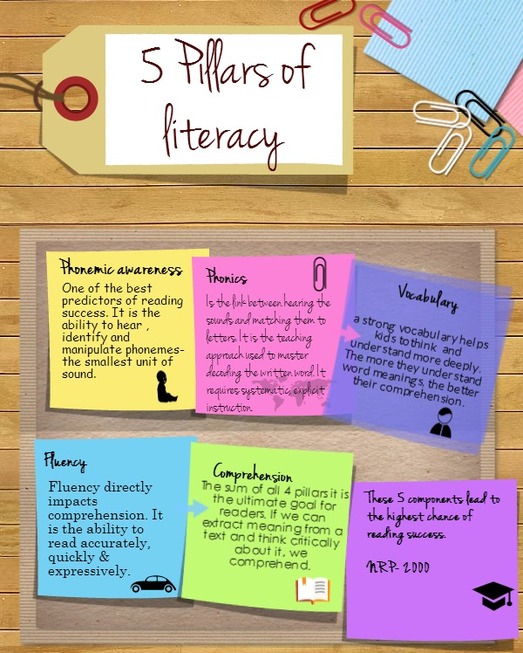the 5 Pillars of literacy
|
Reading instruction does not end after first grade. Research reveals that when the following five components are effectively taught, they lead to the highest chance of reading success (known as the five pillars of reading): phonemic awareness, phonics, fluency, vocabulary, and comprehension. We do not necessarily use all 5 pillars at each grade level. For example, for proficient readers in high school, phonemic awareness is something that they mastered long ago in primary grades. They may occasionally apply some phonic knowledge while decoding some troublesome vocabulary in social studies but they no longer require instruction in this area. Comprehension and vocabulary would take a front seat for highly-skilled readers as they seek to construct meaning from complex text.
For our early learners, the 5 pillars are important as they begin their reading journey moving from phonemic awareness to applying phonics for decoding new words. Teachers focus on building vocabulary as students begin to comprehend text at a greater degree of difficulty, while maintaining fluent reading. No matter what grade, a focus on the 5 pillars lead students to reading success. The infographic to the left informs parents how to develop these skills in their child, and reminds teachers of the importance of each element. There is a plethora of research, including the National Reading Panel’s findings and recommendations, supporting that a strong reading program provides explicit instruction and practice within all 5 pillars. |


